|
Kosova
> Prishtina
Prishtina
is the capital and the largest city of Kosova, it and its suburbs have a total
population of over 400,000. It is the administrative, economical, and cultural
center of Kosova.
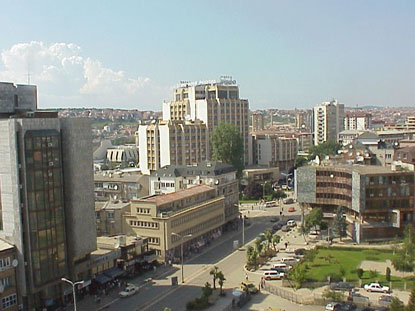
Mother Teresa Street |
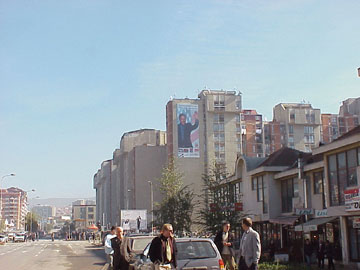
Bill Clinton Boulevard |
The area of Prishtina has a long history, in its vincity archaeological discoveries
have been found which date back to the early neolithical ages.
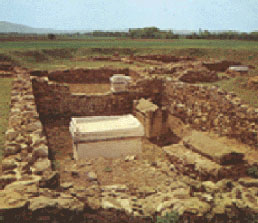
The remains of Ulpiana, near Prishtina |
Southeast of the city, the remains of Ulpiana were discovered, the center of the
Illyrian province of Dardania. Ulpiana was founded in the 2nd century during the
rule of Emperor Trajan, and renewed in the 6th century during the rule of Justinian,
after whom it was called Iustinana Secunda. According to inscriptions on the monuments
from Ulpiana, it is apparent that it was one of the most beautiful cities of the
Illyrian Dardania, as it was often reffered to as Ulpiana Splendissima. A number
of articles were discovered here such as coins, ceramics, weapons, jewlery, all
of which are exhibited at the Museum of History of Kosova in Prishtina.
After the incursions of Slavs and barbarians during the early Middle Ages, the
destroyed town of Ulpiana was abandoned, creating the locality for the new town
of Prishtina.
During Serbian rule, Prishtina was a major political center. Near Prishtina is
the site of the Battle of Kosova (1389), in which a Balkan alliance, led by Serbian
Prince Lazar, fought against the Ottoman army. The battle marked the begining
of Ottoman rule of the region.
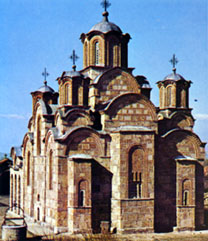
The Gracanica Monastery (14th century) near Prishtina
|
Prishtina developed in the 14th and 15th century as a mining and trading center
of the Novoberde and the Mount Kopaonik (Albanik) mining industry. During the
Ottoman rule in the region, it was an important administrative center, seat of
the ruling Pasha, and for a while it was the center of the Kosova Vilayet.
During the Austrian-Turkish Wars of the 17th century, the Albanian population
of Prishtina under the command of Pjet'r Bogdani fought aside the Austrian army
against the Ottoman Turks. During Piccollominni's campaign and later Austrian
campaigns, Prishtina suffered considerably, as was the case during the 1859 and
1863 fires. 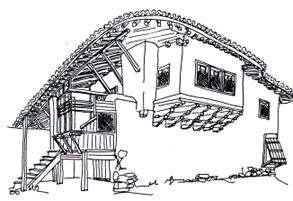
A
rendering of
the building of the Academy of Arts and Sciences
(18th century), an example
of Prishtina's traditional architecture

Faith Mosque (15th century)
|
In the 19th century, according to the writings of A. Bue (1838), Prishtina had
7000-9000 inhabitants, and Hilferding (1857) wrote that the town had 1500 houses,
one fifth of which were Serbian. In the middle of the 19th century, Prishtina
was famous for its fairs (panair) of various crafts and trade articles, especially
goat hide and hair articles, coppersmiths, pottery, embroidery, etc.
During World War II, Prishtina (with around 16,000 inhabitants), was included
in the zone occupied by Italians, and was the center of the prefecture with the
same name.
Historical monuments near Prishtina include the Gracanica Monastery, built in
1321 on the basis of an older church, and the Mausoleum of Sultan Murat, reconstructed
in 1850 by Hurshid Pasha.

View
of Prishtina from Grand Hotel
Prishtina became the capital of Kosova after World War II. Up to this point, Prishtina
had retained its appearance as an oriental town, but the intensive modernization
of Prishtina in socialist Yugoslavia had managed to completely change the structure
and look of the city, and had even destroyed the old ,arshia (shopping street)
and 18th and 19th century buildings to replace them with new ones.
The old
narrow cobble stone streets and low mostly mud made houses were replaced by new
modern complexes and wide streets, and attractive public buildings: the Assembly
Building, Radio Station, the Television of Prishtina, Press and Publishing Hall,
the University Library, several banking centers, etc.
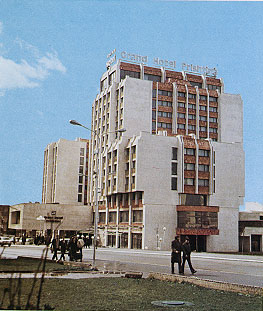
The Grand Hotel in Prishtina |
After Serbia revoked Kosova's autonomous status in 1989, virtually all public
buildings and companies of Prishtina were taken over by Serbian appointed managements,
which dismissed virtually all Albanian employees.
Prishtina is the most significant high education center of Kosova. The University
of Prishtina, founded in 1970, is located here with its 13 faculties (colleges).
Prishtina is also home of the Academy of Arts and Sciences of Kosova which gathers
Kosova's most prominent intellectuals, the Institute of Albanology, and the Institute
of History. Unfortunately, after the Belgrade authorities revoked Kosova's autonomy
and took over its administration, in an attempt to close down these institutions
deprived them of their buildings and offices, forcing them to find alternative
working space around the city. In addition, the Serb police frequently harrass
members, professors, students and employees of these institutions.
The most popular localities of Prishtina are Kurrizi (The Spine) in the
Dardania quarter and Qafa (The Neck) near the center of the city,
which feature many shops, cafés and hangouts, opened in tunnels built within
residential buildings.
Click here for more views from Prishtina
|